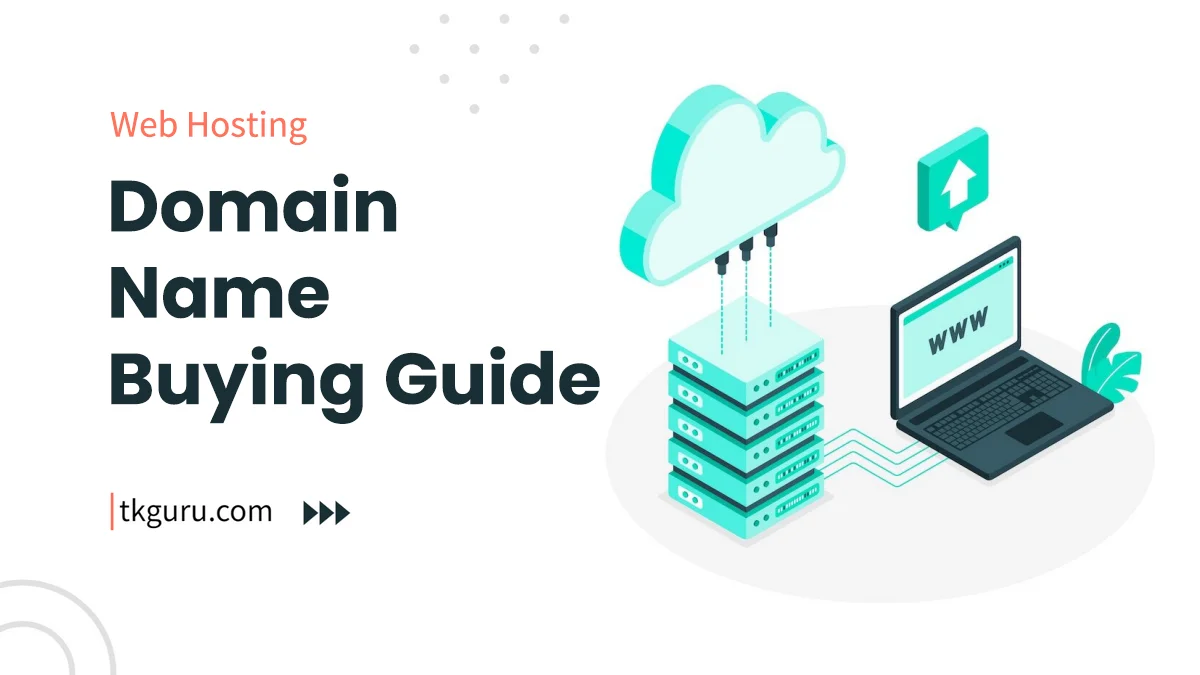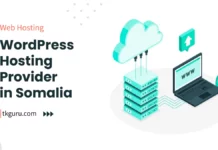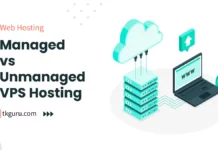Advertisements
Ratings

“What is Domain Extension?
How can we get Domain Extension?
Which Domain Extension should we take?
The article below has answers to all your questions.
Please read this article carefully.”
Buy Domain Name – In the vast landscape of the internet, a domain name serves as your digital address, allowing users to find and access your website.
Whether you’re starting a blog, launching an online store, or building a professional portfolio, acquiring the right domain name is a crucial step.
In this guide, we’ll walk you through the process of where and how to buy domain names, ensuring that you make informed decisions and secure a domain that aligns with your online goals.
Section 1: Choosing a Domain Registrar: Before diving into the domain buying process, it’s essential to choose a reputable domain registrar.
These registrars facilitate the registration and management of domain names. Here are factors to consider when selecting a registrar:
GoDaddy: Known for its extensive services, GoDaddy offers domain registration, web hosting, SSL certificates, and email solutions. They provide 24/7 customer support and comprehensive domain management tools.
Namecheap: Namecheap is affordable and user-friendly, offering domain management features, web hosting, SSL certificates, and VPN services. Their customer support is responsive and helpful.
Google Domains: Google Domains integrates well with other Google services and offers domain management tools. They provide privacy protection and options to bundle with G Suite and website builder services.
Bluehost: Bluehost is a popular hosting provider that also offers domain registration. They provide domain management features, web hosting, SSL certificates, and email solutions.
HostGator: HostGator is a reliable registrar offering domain registration and web hosting services. Their customer support is available 24/7, and they offer domain management tools, SSL certificates, and email hosting.
SiteGround: SiteGround provides web hosting services along with domain registration. They offer a user-friendly interface, domain management tools, SSL certificates, and a content delivery network (CDN).
DreamHost: DreamHost offers domain registration, hosting, SSL certificates, and email solutions. They provide domain management tools and have a strong reputation for customer support.
Network Solutions: Network Solutions offers domain registration, web hosting, SSL certificates, and email services. They provide domain management features and reliable customer support.
1&1 IONOS: 1&1 IONOS offers a range of services including domain registration, web hosting, SSL certificates, and email solutions. They provide domain management tools and customer support.
Name.com: Name.com offers domain registration services along with web hosting, SSL certificates, and email solutions. They provide domain management tools and responsive customer support.
Choosing the right domain registrar depends on your specific requirements, budget, and preferences.
Evaluate the features, pricing, and additional services offered by each registrar to make an informed decision for your domain registration needs.
Table: Comparison of Domain Registrars
Here’s the comparison table of domain registrars with pricing ranges for domain registration:
| Registrar | Pricing Range (Domain Registration) | Customer Support | Domain Management Features | Privacy Protection | Additional Services |
|---|---|---|---|---|---|
| GoDaddy | $9.99 – $14.99/year | ✓ | ✓ Domain forwarding | ✓ WHOIS privacy | Hosting, SSL, email |
| Namecheap | $8.88 – $38.88/year | ✓ | ✓ DNS management, domain transfers | ✓ WHOIS privacy | Hosting, SSL, VPN |
| Google Domains | $12.00/year | ✓ | ✓ DNS management, domain transfers | ✓ WHOIS privacy | G Suite, website builder |
| Bluehost | $11.99 – $17.99/year | ✓ | ✓ DNS management, domain transfers | ✓ WHOIS privacy | Hosting, SSL, email |
| HostGator | $12.95/year | ✓ | ✓ DNS management, domain transfers | ✓ WHOIS privacy | Hosting, SSL, email |
| SiteGround | $15.95/year | ✓ | ✓ DNS management, domain transfers | ✓ WHOIS privacy | Web hosting, SSL, CDN |
| DreamHost | $7.99 – $13.95/year | ✓ | ✓ DNS management, domain transfers | ✓ WHOIS privacy | Hosting, SSL, email |
| Network Solutions | $34.99 – $79.99/year | ✓ | ✓ DNS management, domain transfers | ✓ WHOIS privacy | Hosting, SSL, email |
| 1&1 IONOS | $1.00 – $15.00/year | ✓ | ✓ DNS management, domain transfers | ✓ WHOIS privacy | Hosting, SSL, email |
| Name.com | $8.99 – $12.99/year | ✓ | ✓ DNS management, domain transfers | ✓ WHOIS privacy | Hosting, SSL, email |
Features Overview:
- Pricing Range (Domain Registration): The approximate cost range for domain registration services.
- Customer Support: Availability and quality of customer support.
- Domain Management Features: Features related to managing domain settings, transfers, and DNS management.
- Privacy Protection: Availability of WHOIS privacy protection to keep personal information private.
- Additional Services: Extra services offered, such as hosting, SSL certificates, email solutions, VPN, and more.
Choosing the right domain registrar depends on factors such as your budget, required features, and specific needs. Use this comparison table to evaluate the offerings of each registrar and make an informed decision for your domain registration.
Section 2: Searching for Available Domain Names: Once you’ve chosen a registrar, it’s time to search for available domain names. Domain search tools provided by registrars help you find the perfect name for your website. Here’s how to do it:
- Brainstorm and Refine: Start by brainstorming domain name ideas that align with your brand or website’s purpose. Consider keywords, relevant phrases, and your niche.
- Use Domain Search Tools: Visit the registrar’s website and enter your desired domain name into the search bar. The tool will display whether the name is available or taken.
- Check Variations: Experiment with different domain extensions (TLDs) and variations of your desired name to find available options.
Section 3: Registering a Domain Name: Once you’ve found an available domain name that suits your needs, it’s time to register it. Here’s a step-by-step guide:
- Create an Account: Sign up for an account with your chosen domain registrar. Provide the required information, including your email address and contact details.
- Add to Cart: Search for the domain name you want and add it to your cart. Some registrars might suggest related domain names you might be interested in.
- Configure Domain Settings: During the checkout process, you’ll have the option to configure settings such as privacy protection (to shield personal information from WHOIS records) and auto-renewal (to prevent domain expiration).
Section 4: Domain Name Configuration: Once your domain is registered, you need to configure its settings to ensure it connects to your website and email services:
- Set Up DNS Records: Access your domain management dashboard and configure DNS records. This step directs visitors to the correct server when they type your domain into their browser.
- Connect to a Website or Hosting Provider: If you have a website or hosting provider, follow their instructions to connect your domain to their services. This step ensures your website is accessible using your domain name.
- Configure Email Services: If you plan to use your domain for email, configure email services by setting up MX (Mail Exchange) records.
Section 5: Domain Privacy Protection: Privacy protection is crucial to prevent your personal information from being publicly accessible through WHOIS records. Many registrars offer this service for an additional fee. Here’s why it matters:
- Prevent Spam: Domain privacy protection shields your email address and contact information, reducing the likelihood of receiving unsolicited emails and spam.
- Protect Identity: By keeping your personal information private, you reduce the risk of identity theft and other cyber threats.
Section 6: Managing and Renewing Your Domain: Managing and renewing your domain is essential to maintain your online presence. Follow these steps:
- Access Your Dashboard: Log in to your registrar’s account to access your domain management dashboard.
- Monitor Expiration Date: Keep track of your domain’s expiration date. Some registrars offer auto-renewal, ensuring your domain remains active.
- Renew on Time: To avoid domain expiration and potential loss, renew your domain before the expiration date.
Section 7: Transferring Domains: In some cases, you might want to transfer your domain to a different registrar. Here’s how:
- Reasons for Transfer: Common reasons include better pricing, improved features, or consolidating all your domains in one place.
- Initiating Transfer: Begin the transfer process by unlocking your domain at your current registrar and obtaining an authorization code.
- Completing the Transfer: Provide the authorization code to your new registrar and follow their instructions to complete the transfer. It might take a few days to complete the process.
Section 8: Premium Domain Names and Auctions: Premium domain names are valuable domains that often have memorable keywords or phrases. They can be purchased directly or through domain auctions. Here’s what to know:
- Premium Domain Names: Premium domains might have a higher price due to their perceived value, relevance, and memorability.
- Domain Auctions: Participating in domain auctions allows you to bid on and potentially purchase valuable domain names. Be prepared for competitive bidding.
Section 9: Domain Name Tips and Best Practices: Before finalizing your domain purchase, consider these tips and best practices:
As you embark on the journey of buying a domain name, there are several tips and best practices to keep in mind to ensure you choose the right domain and set yourself up for online success. Here are some valuable insights:
1. Reflect Your Brand: Your domain name is a representation of your brand, so choose a name that reflects your business, website, or the content you’ll be offering. Keep it relevant and memorable to leave a lasting impression on your visitors.
2. Keep It Simple and Easy to Spell: Complex and hard-to-spell domain names can lead to confusion and misspellings. Opt for a name that is easy to remember, type, and pronounce. Avoid using hyphens, numbers, or special characters that might complicate the name.
3. Choose the Right Domain Extension: The domain extension (TLD) is the suffix that comes after the dot in your domain name (e.g., .com, .net, .org). While .com is the most popular and widely recognized, there are many other TLDs available that can help define your website’s purpose or industry.
4. Prioritize Keywords: If relevant to your website’s content, consider incorporating keywords into your domain name. Keywords can provide a clear idea of what your site is about and improve its search engine visibility.
5. Check for Trademarks and Copyrights: Before finalizing a domain name, conduct a thorough search to ensure it doesn’t infringe on existing trademarks or copyrights. Using a name that’s already protected can lead to legal complications down the line.
6. Keep It Short and Memorable: Shorter domain names are easier to remember and share. Aim for a name that is concise and sticks in people’s minds.
7. Avoid Hyphens and Numbers: Hyphens and numbers can be confusing when spoken and are often forgotten when typing a domain name. Stick to letters only for a more user-friendly name.
8. Think Long-Term: Consider the future direction of your website or business. Will the domain name still be relevant and meaningful as your brand grows?
9. Use Domain Name Generators: Domain name generators can help spark creativity by suggesting available domain names based on keywords or themes you provide.
10. Consider Local and Global Audiences: If your website targets a specific geographic location, consider using a country code TLD (ccTLD) that corresponds to that region (e.g., .us for the United States, .uk for the United Kingdom).
11. Protect Your Identity with Privacy Protection: When you register a domain, your personal contact information becomes publicly available in the WHOIS database. Opt for privacy protection services offered by registrars to keep your information private and reduce the risk of spam or identity theft.
12. Plan for the Long Term: Choose a domain name that you’ll be happy with in the long run. Changing your domain later can impact your branding, SEO, and user recognition.
13. Renew Your Domain on Time: Set reminders to renew your domain before it expires. Failure to renew on time can result in losing your domain, and it might be purchased by someone else.
14. Use Proper Domain Format: Always use lowercase letters in your domain name. While domains are not case-sensitive, using lowercase makes it easier for users to remember and type accurately.
15. Research Social Media Availability: Check if the domain name you’re considering is available as a username on popular social media platforms. Consistency across platforms helps in building a unified online presence.
By following these domain name tips and best practices, you’ll be better equipped to choose a domain name that resonates with your audience, aligns with your brand, and sets you up for online success. Remember that your domain name is a critical aspect of your online identity, so take the time to make an informed and thoughtful choice.
Conclusion: Buying a domain name is a foundational step toward establishing your online presence. By following this step-by-step guide, you can confidently navigate the domain buying process, choose a memorable domain name, and set the stage for a successful online journey.
Domain Name Buy FAQs
What is the process of buying a domain name?
The process of buying a domain name involves these steps:
- Search for available domain names using a domain registrar's search tool.
- Choose a domain name that's relevant to your website's purpose.
- Check the availability and pricing of the chosen domain name.
- Add the domain name to your cart and proceed to the checkout process.
- Provide your contact and payment information to complete the purchase.
How do I find a domain name that's available for purchase?
Use a domain registrar's search tool to enter your desired domain name. The tool will indicate whether the name is available or already registered.
If it's taken, you might need to consider variations or choose a different extension.
Where can I buy domain names?
You can buy domain names from domain registrars such as GoDaddy, Namecheap, Google Domains, and many others.
These registrars offer search tools, registration services, and often additional features like web hosting and website builders.
Can I negotiate the price of a domain name?
Some domain names might be available for negotiation, especially if they're listed for sale by domain owners. However, many domain names have fixed prices.
If you're interested in negotiating, you can contact the owner or use a domain brokerage service.
What should I consider when buying a domain name?
Consider these factors:
- Relevance: Choose a name that reflects your website's purpose.
- Branding: Opt for a name that's memorable and easy to spell.
- Extensions: Consider different extensions (e.g., .com, .net) and their availability.
- Copyright: Avoid names that could infringe on existing trademarks.
- Future growth: Choose a name that can accommodate your website's potential expansion.
When buying a domain name, take your time to select a name that aligns with your website's goals and represents your brand effectively. Once you've found the right name, complete the purchase through a reputable domain registrar.
| Web Hosting | Website |
| WordPress | Google Adsense |
| SEO | Affiliate Marketing |
| Blogging | YouTube |
Recent Posts
- 5 Best WordPress Hosting Provider in Somalia 2023
- 5 Best WordPress Hosting Provider in Austria 2023
- 5 Best WordPress Hosting Provider in Luxembourg 2023
- 5 Best WordPress Hosting Provider in Switzerland 2023
Related Tags
गूगल कंपनी को कैसे खरीदें, डोमेन क्या है, डोमेन क्या है इन हिंदी, डोमेन नाम, आपका डोमेन नाम, गूगल एनालिटिक्स ट्रैकिंग कोड क्या है, GoDaddy






